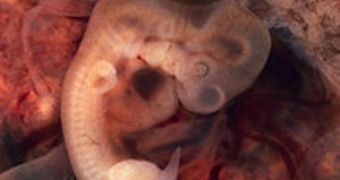Only recently, San Diego has witnessed the latest meeting for the American Society for Reproductive Medicine.
During this meeting, researchers working with the Department of Obstetrics & Gynecology at the Oregon Health & Science University made it public news that they succeeded in combining genes coming from three different individuals in order to produce viable embryos.
The specialists explain that, when they first began experimenting with this technique, they relied on nonhuman primates.
However, as they came to a better understanding of the process, they switched to human cells and managed to prove that, by combining the genes of three different individuals, it is possible to “manufacture” healthier embryos.
As they go on to explain, their main goal was to find a way to prevent various health problems whose underlying condition is a gene defect in the cell mitochondria.
Dr. Shoukhrat Mitalipov explains the working principles behind this technology as follows:
“Cell mitochondria contain genetic material just like the cell nucleus and these genes are passed from mother to infant. When certain mutations in mitochondrial DNA are present, a child can be born with severe conditions.”
However, “Using this process, we have shown that mutated DNA from the mitochondria can be replaced with healthy copies in human cells.”
To cut a long story short, these scientists basically replaced the so-called “damaged” mitochondrial DNA with a perfectly “healthy” one. Eurek! Alert explains that, for the time being at least, the US government does not approve of this procedure.
However, it seems that high officials in the United Kingdom are seriously considering the possibility of using this technology as a means to deal with mitochondria-based health conditions even before they begin to manifest themselves.
As Dr. Mitalipov puts it, “While the human cells in our study only allowed to develop to the embryonic stem cell stage, this research shows that this gene therapy method may well be a viable alternative for preventing devastating diseases passed from mother to infant.”

 14 DAY TRIAL //
14 DAY TRIAL //